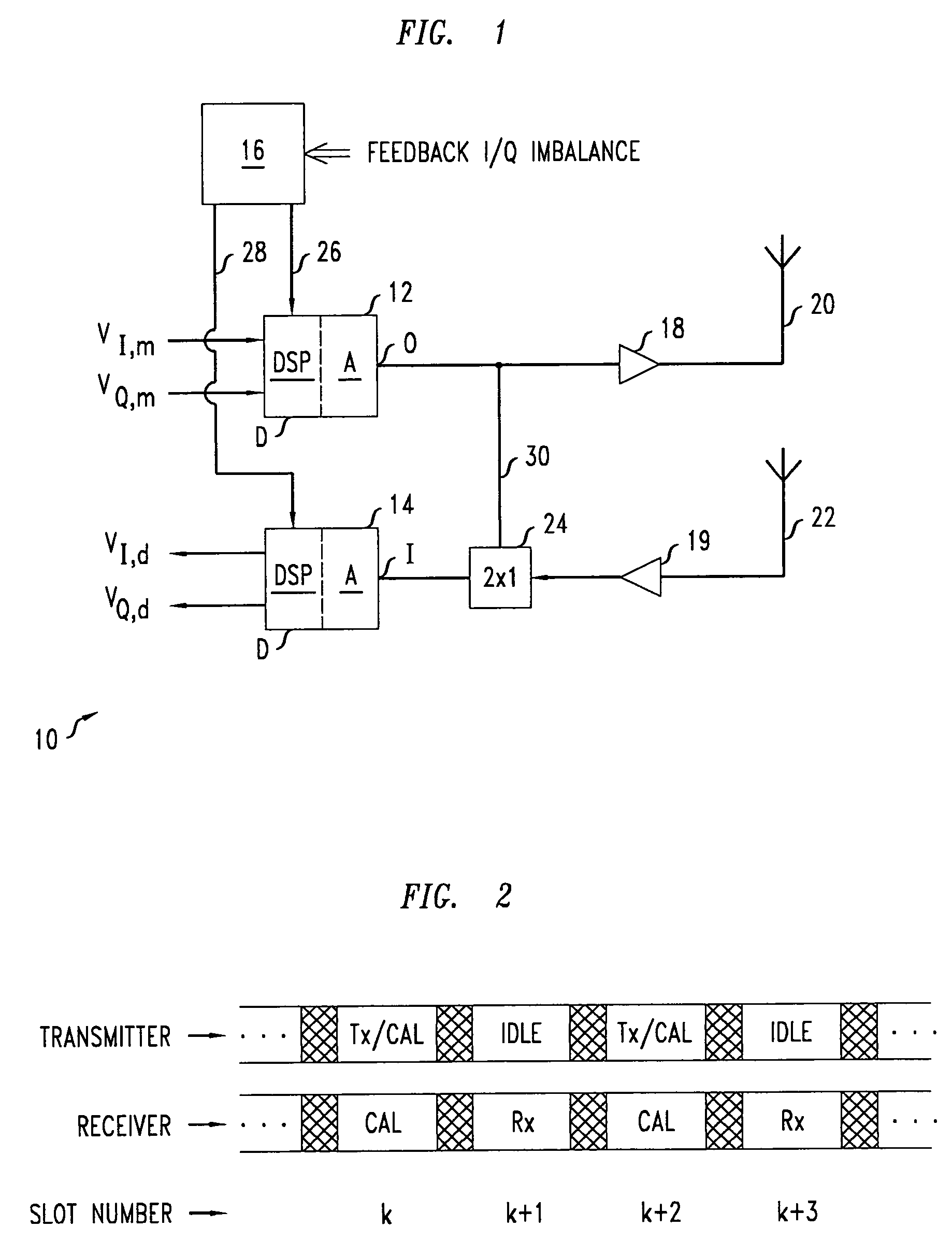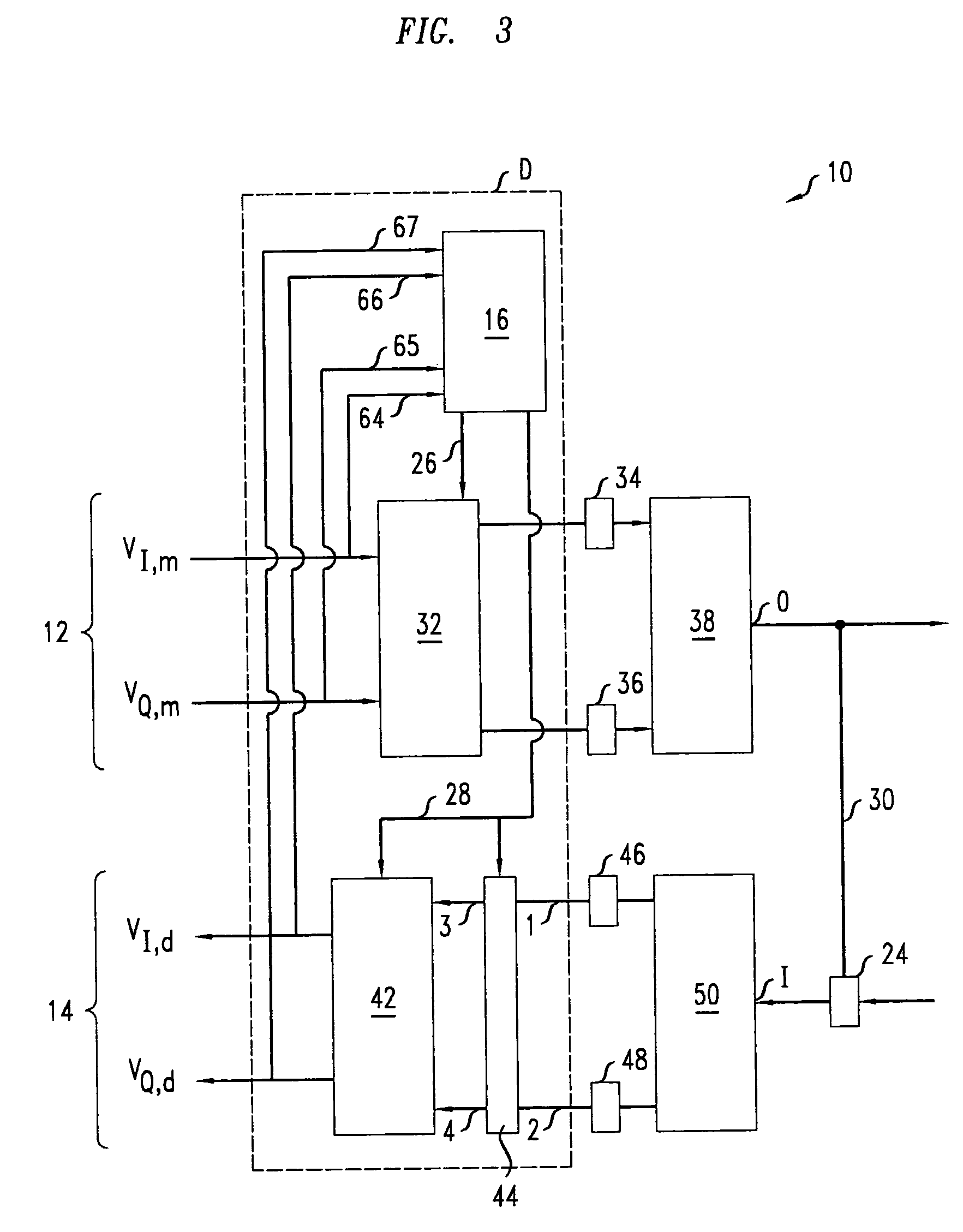Inphase/quadrature phase imbalance compensation
a transceiver and imbalance compensation technology, applied in the field ofquadrature modulation, can solve the problems of insufficient compensation of inphase/quadrature phase imbalances, inability to simply eliminate i/q imbalances from analog components of ic transceivers, and incorporation of significant extra circuitry to collect feedback, so as to reduce i/q imbalances and reduce roundtrip. , the effect of reducing the imbalan
- Summary
- Abstract
- Description
- Claims
- Application Information
AI Technical Summary
Benefits of technology
Problems solved by technology
Method used
Image
Examples
example 1
[0052]FIGS. 9A-9E illustrate the method 70 for an exemplary embodiment of transceiver 10. In the exemplary embodiment, the A circuit of the transmitter 12 has an I / Q imbalance that is a pure gain, gT, wherein gT=2. Similarly, in the exemplary embodiment, the A circuit of the receiver 14 has an I / Q imbalance that is a pure gain, gR, wherein gR=8. The method 70 evolves the gains gmc and gdc of the I / Q digital compensators 32, 42.
[0053] At step 72, the method 70 involves initializing the gain of both the I / Q pre-compensator 32 and the I / Q post-compensator 42 to one, i.e., gmc(0)=gdc(0)=1 as in FIG. 9A. Thus, the roundtrip I / P gain imbalance, g, i.e., g=|VI,m(k) / VQ,d(k)| / |VI,d(k) / VQ,d(k)|, initially satisfies: g=1×2×8×1=16.
[0054] At step 74, the method 70 involves iteratively rescaling the values of the gains of I / Q compensators 32, 42 while switch 44 is in mode A. The above-described iterative update formulas imply that each of the iterations will multiply the gain of both I / Q compen...
example 2
[0059]FIG. 10 shows a simulation of the evolution of the compensating I / Q gains and I / Q phases in another transceiver when these imbalances were corrected by the method 70 of FIG. 7. In the simulation, the A circuit of transmitter 12 has an initial I / P gain of 1.02 and an initial I / P phase of 2 degrees, and the A circuit of the receiver 14 has an initial I / P gain of 1.04 and an initial I / P phase of 4 degrees. The simulated results of FIG. 10 show that about 22 iterations in mode A and about 20 iterations in mode B suffice to compensate the I / P imbalances of both the transmitter 12 and receiver 14 for this exemplary embodiment. Thus, small I / Q imbalances can be rapidly dynamically compensated.
PUM
 Login to View More
Login to View More Abstract
Description
Claims
Application Information
 Login to View More
Login to View More - R&D
- Intellectual Property
- Life Sciences
- Materials
- Tech Scout
- Unparalleled Data Quality
- Higher Quality Content
- 60% Fewer Hallucinations
Browse by: Latest US Patents, China's latest patents, Technical Efficacy Thesaurus, Application Domain, Technology Topic, Popular Technical Reports.
© 2025 PatSnap. All rights reserved.Legal|Privacy policy|Modern Slavery Act Transparency Statement|Sitemap|About US| Contact US: help@patsnap.com



